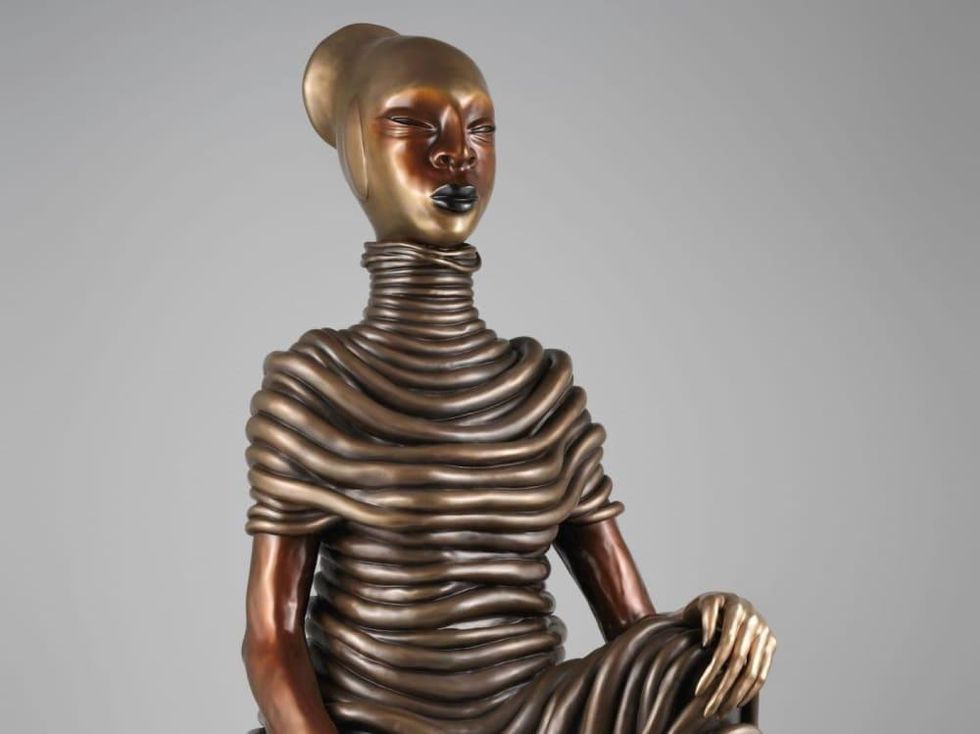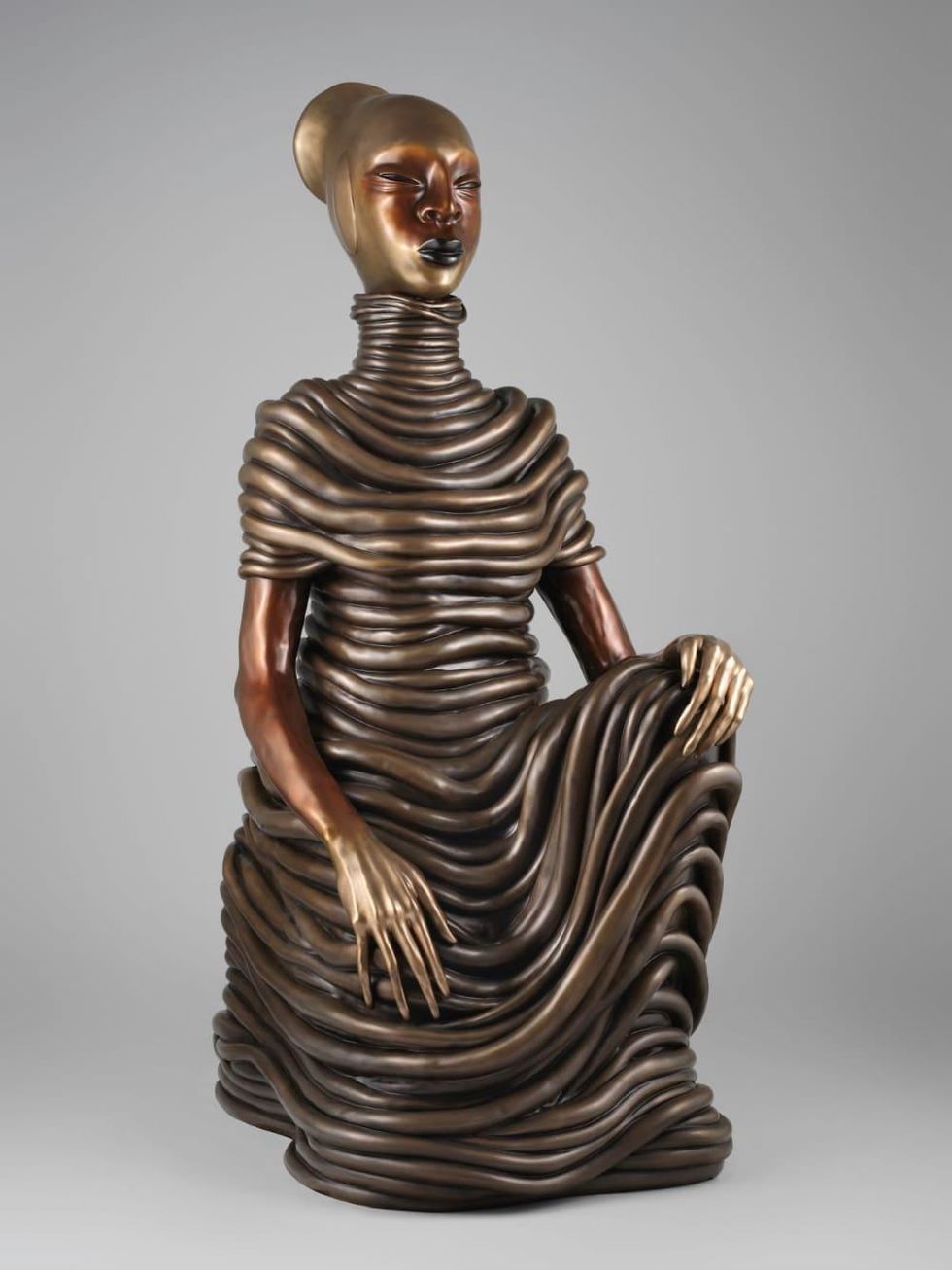Museum news
New 7-foot 'bronze goddess' presides over pond at Fort Worth's Modern Art Museum
A large new bronze sculpture is taking a place of prominence at the Modern Art Museum of Fort Worth — overlooking the outdoor reflecting pool.
The Modern has acquired the significant new piece, The Seated III, 2019 by Kenya-born sculptor Wangechi Mutu, for an undisclosed amount. The work — "a large sculpture of a seated female figure entwined in bronze coils" — will become part of the museum's permanent collection, according to a release.
It will go on view in a first-floor pavilion gallery, replacing Michelangelo Pistoletto's The Etruscan (L'etrusco), which looks out to the pond.
“Mutu’s The Seated III will change the face of the Modern," says senior curator Andrea Karnes. "Like a divine presence presiding over the pond, this bronze goddess will shine on all who enter the museum, exuding a calm strength.”
Mutu created The Seated III in 2019 as part of a four-sculpture commission for the façade of New York City’s Metropolitan Museum of Art, for its exhibition "The NewOnes, will free Us." According to the Modern, The Seated III and its mirror image, The Seated I, occupied niches facing Fifth Avenue, as did another mirrored pair, The Seated II and The Seated IV. Two of the sculptures have gone into the Met’s permanent collection.
“Wangechi Mutu’s recent group of four bronze female figures is exciting and powerful, and we are honored to add one of them to our permanent collection,” says Modern director Marla Price.
And, coming in at 82 7/8 inches tall (or 6-foot-11) and 855 pounds, she's no shrinking violet.
Mutu, who lives in both Nairobi and Brooklyn, took inspiration from African sculptures of strong female figures called "caryatids," or "load-bearers."
"The Seated III ... is serene and regal, and her calm extends to her fingers and her expression, which is that of a woman in her rightful place," the museum says. "Her garment is fashioned from sinewy coils that envelop and protect her body, draping around her suggestively like heavy embellishment.
"Her stretched head refers to the tradition of binding craniums in many ancient high-status individuals, like wealthy women of the Mangbetu, royalty from ancient Kemet, and even rulers of the Aztec and Mayan empires. Those painful and heavy enhancements and alterations were symbols of great status."
The new piece will go on view Saturday, December 19.
In conjunction with the museum's holiday Modern Lights presentation, there's free admission to the galleries on Friday evenings. For more information on admission, current hours, and safety protocols, visit www.themodern.org.


